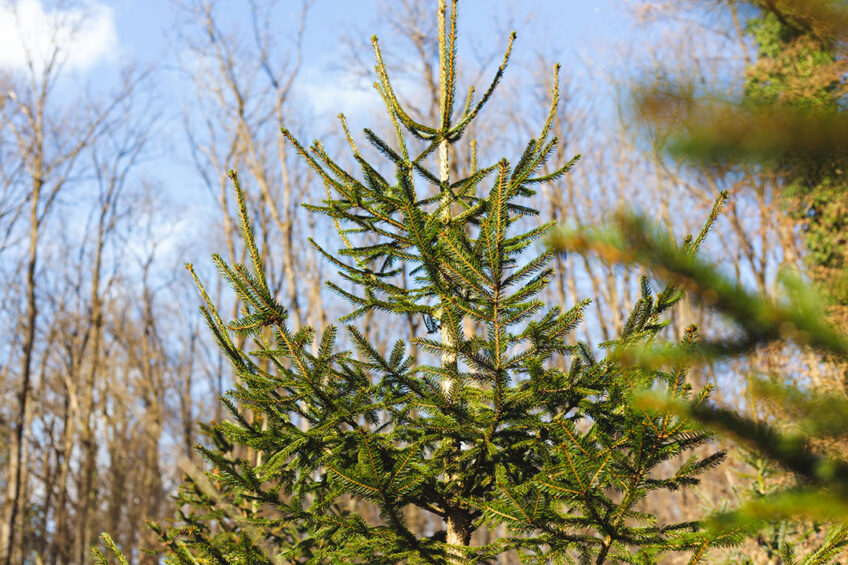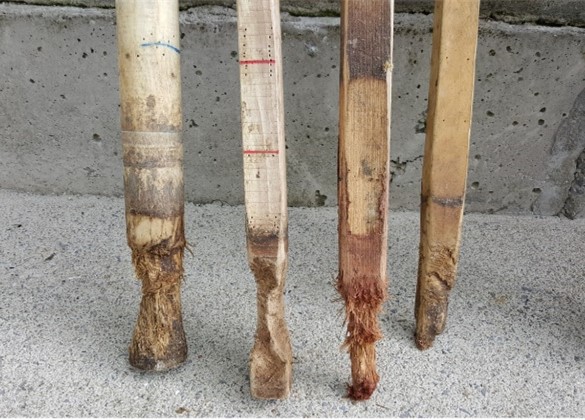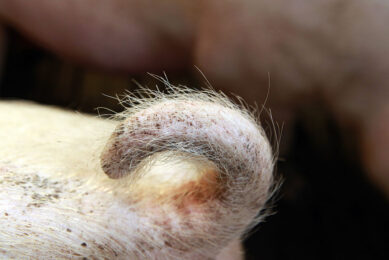What do Christmas trees have to do with pig tail biting?

Around mid-January streets are filled with abandoned Christmas trees for waste collection. For the omnivorous pig, nothing classifies as waste. These little trees are in fact a good opportunity to reduce costs.
It is in their nature to drag with branches and logs
Pigs in nature forage the woods and are most of the day busy with their snouts rooting, pushing or destroying something. They are hardwired to do this, even if the feed is readily available. Indoors this leads to aberrrant behaviour such as tail biting. Research studies have identified that environmental enrichment for pigs needs to be manipulable, chewable, destructable and edible. Straw fits these criteria perfectly but is not the suitable choice for every farm . Therefore research effort has been put in finding objects that are not only of interest to pigs, but also practical in terms of farm management.
Wood can be investigated, manipulated, chewed and it does not matter if pigs ingest small parts

A practical alternative to straw
Wood has been proposed as a possible source to attract and maintain pigs’ interest. It can be investigated, manipulated, chewed and it does not matter if they ingest small parts. Wood is also durable, widely available, has low risk in terms of biosecurity, and can in many cases be cost-effectively locally sourced. It can also be provided to different age groups (growing pigs, sows, boars) as long as the diameter of the wood is adjusted to the size of the pigs.
Wooden poles can be placed in a (metal) dispenser or wall-mounted bracket so that it is off the ground and can easily be manipulated. It can be vertically or diagonal to faciliate access. Hanging a wooden block on a chain strongly diminishes the opportuntiy for the pig to manipulate it and is therefore not effective.
Pigs prefer spruce
Wood types differ in their softness and moisture content. Christmas trees are usually pine, fir or spruce. Spruce and Scots pine are softer than beech and and larch. In a research study, pigs consumed wooden posts of spruce more quickly than those of beech, larch or Scots pine (see picture below). Soft wood may thus lead to a higher replacement rate of the material.

None of the wood types caused visceral condemnation (such as injuries to the mouth, digestive tract or liver). While spruce is preferred by pigs, it did across two Irish studies (1,080 pigs) not result in less tail biting and even showed to be a risk for more tail lesions. However, in a Finnish study (780 pigs), where fresh wood was suspended horizontally, pigs showed less tail- and ear biting. Therefore, there is no guarantee that fresh wood will reduce tail biting, but there seems to be little risk for the pigs and it will keep them busy for a while chewing away.











